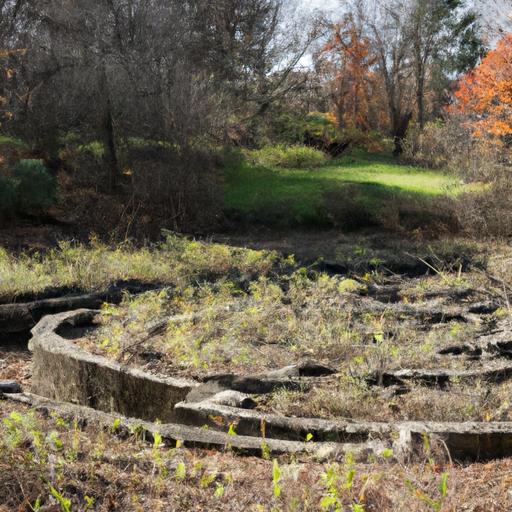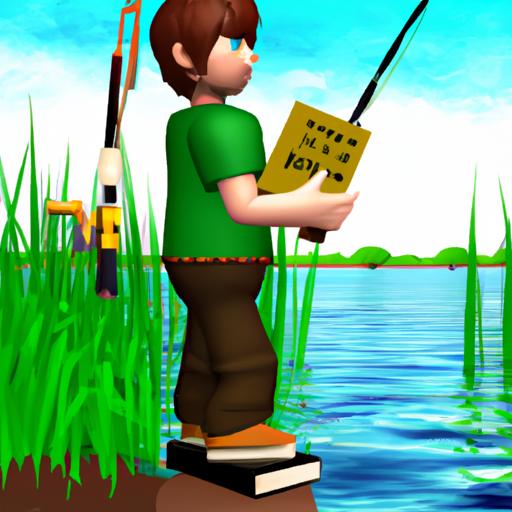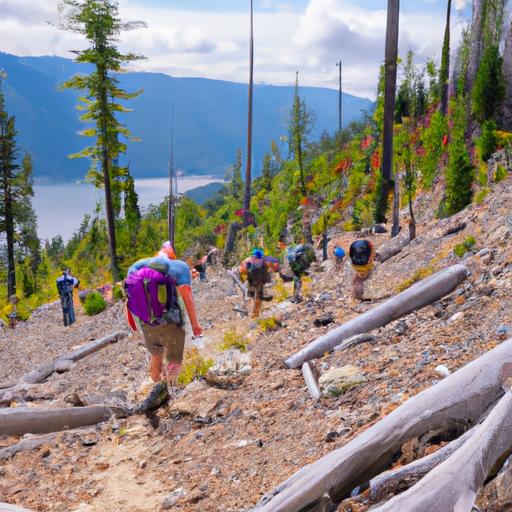Introduction
Picture yourself strolling through a vibrant park, surrounded by lush greenery, the sound of laughter filling the air. Parks and recreation areas bring a sense of tranquility and joy to our lives, offering a sanctuary amidst the bustling cityscape. But have you ever wondered about that peculiar feature, the pit, nestled within these picturesque landscapes? Join me as we embark on a journey to uncover the secrets behind the pit in parks and recreation.
A. Brief Overview of Parks and Recreation Areas
Parks and recreation areas serve as vital havens in urban environments, providing spaces for relaxation, recreation, and communing with nature. These meticulously designed public spaces have a rich history dating back centuries. From sprawling urban parks to neighborhood green spaces, their purpose remains consistent: to enhance the quality of life for individuals and communities alike.
B. Introduction to the Topic of the Pit in Parks and Recreation
Now, let’s dive deeper into the heart of the matter: the pit. As you explore parks, you may have come across this enigmatic feature, leaving you curious about its purpose and significance. Fear not, for we shall unravel the mysteries surrounding the pit. From its origins to its role in park design, we’ll explore why the pit finds its place in these serene settings. So, let’s embark on this enlightening journey together, shall we?
Stay tuned for Section II, where we’ll delve into the captivating history of parks and recreation areas, unveiling the story behind their creation and enduring importance.
History of Parks and Recreation Areas
A. Evolution of Parks and Recreation Areas
Parks and recreation areas have a fascinating history that spans centuries, evolving alongside our changing societies. Initially, these green spaces served as royal hunting grounds, exclusive to the privileged few. However, as societal values shifted towards inclusivity and the recognition of the importance of nature, parks transformed into public spaces accessible to all.
From the grandeur of Central Park in New York City to the tranquil beauty of the Royal Botanic Gardens in London, parks have become integral parts of our urban landscapes. With meticulous planning and design, these spaces have evolved to cater to the needs and desires of the communities they serve.
B. Purpose and Significance of Creating Public Spaces
The creation of parks and recreation areas goes far beyond aesthetics. These spaces hold profound significance for both individuals and communities. They provide us with an escape from the concrete jungle, offering solace and respite from the hustle and bustle of daily life. Parks enable us to reconnect with nature, reinvigorate our senses, and rejuvenate our spirits.
Moreover, parks hold immense cultural and historical value. They serve as living testaments to our heritage, preserving green spaces amidst urban development. By creating public spaces, we foster a sense of belonging and shared experiences, promoting social cohesion and community engagement.
C. Importance of Maintaining and Enhancing These Areas
Maintaining and enhancing parks and recreation areas is crucial to ensure their longevity and continued benefits. Regular maintenance, including landscaping, infrastructure upkeep, and cleanliness, helps uphold the aesthetic appeal and functionality of these spaces. Additionally, thoughtful enhancements, such as the inclusion of amenities and recreational facilities, cater to the evolving needs of diverse communities.
Furthermore, investing in the preservation and enhancement of parks yields numerous benefits. Studies have shown that spending time in green spaces improves mental well-being, reduces stress levels, and enhances overall physical health. These areas also contribute to environmental sustainability, providing habitats for diverse flora and fauna while mitigating the urban heat island effect.
In Section III, we will embark on a fascinating exploration of the pit in parks and recreation areas, shedding light on its meaning and role in park design.
Understanding the Pit in Parks and Recreation
Parks and recreation areas often boast unique features that add charm and intrigue to their landscapes. Among these, the pit stands out as a distinctive element that captivates visitors. Let’s delve into a deeper understanding of what the pit refers to in parks and recreation, explore its common features and characteristics, and uncover the significance and role it plays in park design.
A. Explanation of What the Pit Refers to in Parks and Recreation
When we refer to the pit in parks and recreation, we are discussing a deliberate depression or lower area within the park’s terrain. This intentional design element is carefully integrated into the landscape to create a visually appealing and functional focal point. The pit often contrasts with the surrounding topography, drawing attention and evoking a sense of curiosity.
B. Common Features and Characteristics of the Pit
Pits in parks and recreation areas encompass various features and characteristics that contribute to their allure. They can range in size, from small sunken seating areas to larger, more expansive depressions. The pit is usually surrounded by seating options such as benches or stone edging, encouraging visitors to gather and engage with the space. Additionally, the pit is often adorned with decorative elements, such as sculptures, fountains, or vibrant flora, further enhancing its aesthetic appeal.
C. Significance and Role of the Pit in Park Design
The pit serves multiple purposes in park design, each contributing to the overall visitor experience. Firstly, it acts as a focal point, drawing attention and creating a sense of intrigue. Its unique design elements and positioning within the park’s layout make it a captivating feature that invites exploration.
Moreover, the pit offers a designated space for relaxation and contemplation. Visitors can find solace in the tranquility of the sunken area, away from the hustle and bustle of the park. It provides a quiet retreat for individuals seeking respite or engaging in personal reflection.
Beyond its aesthetic and recreational value, the pit also serves as a gathering space for community engagement. It acts as a venue for events, performances, or social gatherings, fostering a sense of connection and camaraderie among park-goers.
In the upcoming Section IV, we will uncover the functionality and purpose behind the inclusion of the pit in parks and recreation, unraveling the practical benefits it offers. Stay tuned!
The Pit’s Functionality and Purpose
A. Reasons behind the Inclusion of the Pit in Parks and Recreation
Now that we’ve acquainted ourselves with the pit, it’s time to explore why this unique feature finds its place amidst the wonders of parks and recreation areas. The inclusion of the pit is far from accidental. It serves a multitude of purposes, each contributing to the overall experience and functionality of these cherished public spaces.
Parks are designed to cater to diverse needs and interests, and the pit plays a crucial role in fulfilling these requirements. It acts as a focal point, drawing people together and fostering a sense of community. Whether it be for recreational activities, cultural events, or social gatherings, the pit serves as a dynamic hub that brings individuals from all walks of life together, creating a vibrant tapestry of shared experiences.
B. Practical Purposes Served by the Pit
Beyond its symbolic significance, the pit also serves practical purposes that enhance the functionality of parks and recreation areas. Its unique design and layout allow for versatile uses and activities. From providing a space for performances, concerts, and outdoor theaters to accommodating temporary installations or art exhibits, the pit offers a flexible canvas for various forms of creative expression.
Additionally, the pit often incorporates seating areas, creating a comfortable and inviting space for people to relax, converse, and enjoy the surrounding beauty of the park. It serves as a gathering spot, where individuals can connect with nature and with one another, forging lasting memories and fostering a sense of belonging.
C. Benefits of Having a Pit in Park Design
The presence of a pit in park design brings forth numerous benefits. Firstly, it adds aesthetic appeal, creating an eye-catching focal point that enhances the overall visual experience. The unique topography of the pit adds depth and dimension to the park landscape, contributing to its charm and allure.
Furthermore, the pit’s multi-functional nature enriches the range of activities and events that can be hosted within the park. This versatility ensures that parks remain dynamic and engaging, catering to a wide array of interests and preferences. By providing a space for community engagement, cultural celebrations, and recreational pursuits, the pit strengthens the social fabric of neighborhoods, fostering a sense of unity and pride.
Stay tuned for Section V, where we’ll explore how the pit promotes community engagement and the myriad of activities associated with this vibrant feature.
Community Engagement and the Pit
The pit in parks and recreation areas goes beyond its physical presence; it serves as a catalyst for community engagement, fostering connections and creating memorable experiences for everyone involved.
A. How the Pit Promotes Community Engagement
Imagine the pit as a gathering spot, a central hub that brings people together. Its strategic placement encourages social interaction, as individuals naturally gravitate towards this communal space. Whether it’s families enjoying a picnic, friends engaging in lively conversations, or strangers bonding over shared interests, the pit acts as a magnet, drawing people closer and fostering a sense of belonging.
But what makes the pit so appealing? Its design and functionality play a significant role. With comfortable seating, ample space, and a welcoming ambiance, the pit becomes an inviting setting for people to connect, share stories, and forge new friendships. It serves as a canvas for human connection, where the tapestry of diverse experiences intertwines, creating a vibrant and inclusive community.
B. Activities and Events Commonly Associated with the Pit
The pit becomes a stage for an array of activities and events, adding vibrancy and excitement to parks and recreation areas. From live performances and open-air concerts to cultural festivals and art exhibitions, the pit becomes a versatile space that accommodates various forms of entertainment. Its amphitheater-like design amplifies the voices of performers, allowing their melodies to resonate and captivate the audience.
Additionally, the pit often hosts community-led events such as yoga sessions, storytelling circles, and interactive workshops. These activities promote physical and mental well-being, encourage creativity, and provide opportunities for individuals to share their skills, knowledge, and passions with the community. The pit becomes a dynamic space that ignites curiosity, fosters learning, and nurtures a sense of unity among diverse individuals.
C. Importance of Community Involvement in Maintaining the Pit
To ensure the pit thrives as a vibrant community space, active community involvement is essential. Parks and recreation departments, along with local organizations and volunteers, work hand in hand to maintain and enhance the pit’s functionality. Regular clean-ups, landscaping efforts, and infrastructure maintenance help preserve the pit’s beauty and create a safe and inviting environment for all.
Moreover, community engagement is crucial in organizing events and activities that cater to the diverse interests and needs of the local population. By actively participating in the planning and execution of these initiatives, community members take ownership of the pit, fostering a sense of pride and responsibility in nurturing their shared space.
Stay tuned for Section VI, where we’ll wrap up our exploration of the pit in parks and recreation, summarizing its significance and leaving you with final thoughts on its importance in enhancing public spaces.
Conclusion
As we conclude our exploration into the mysterious presence of the pit in parks and recreation, we can now appreciate its significance in enhancing these beloved public spaces. The pit serves not only as a practical feature but also as a symbol of community engagement and connection.
Throughout history, parks and recreation areas have played a vital role in fostering a sense of belonging and providing a respite from the demands of everyday life. The inclusion of the pit adds an element of intrigue and versatility, inviting individuals from all walks of life to gather, socialize, and partake in various activities.
Whether it’s hosting lively concerts, vibrant markets, or engaging community events, the pit becomes a focal point, drawing people together and creating unforgettable memories. Its presence encourages community involvement, as individuals contribute their ideas, talents, and passions to breathe life into these shared spaces.
So, the next time you visit a park and stumble upon a pit, remember its purpose reaches beyond its physical form. It symbolizes the resilience and spirit of a community coming together to celebrate, connect, and enjoy the beauty of nature.
Now, armed with newfound knowledge, you can appreciate the pit in parks and recreation for its multifaceted role in enriching our lives. Embrace the allure of the pit and cherish the moments it facilitates, for it is in these shared experiences that the true essence of parks and recreation truly shines.
Thank you for joining me on this enchanting journey. Until we meet again, may the pits of parks and recreation continue to inspire and unite us all.



